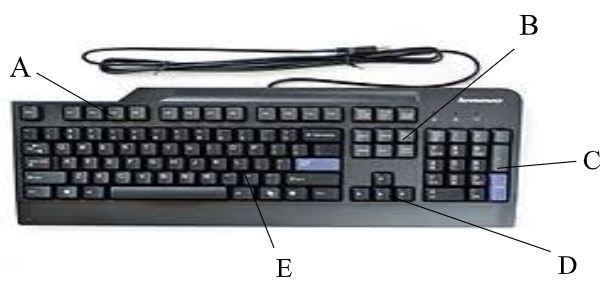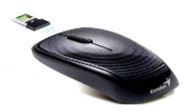Questions
Instructions to candidates
- Answer all questions.
- All answers must be written in English.
- Drawings to be drawn using a pencil.
-
- Define the following terms as used in ICT. (4 Marks)
- Data.
- Data processing
- Information
- Clearly illustrate the two types of system units. (4 Marks)
- Define the following terms as used in ICT. (4 Marks)
-
- Give three characteristics of First Generation Computers. (3 Marks)
- complete the table below about the mechanical tools that were considered to be the earliest
Tool Application area developer Abacus Napier Borne Analytical Engine Charles Babbage
- State the technology used in each of the following computers. (5 Marks)
- 1 st Generation Computers
- 2 nd Generation Computers
- 3 rd Generation Computers
- 4 th Generation Computers
- 5 th Generation Computers
- List the different types of computers when classified according to the following.
- According to physical size. (4 Marks)
- According to functionality. (3 Marks)
- According to purpose. (2 Marks)
- Study the keyboard below and use it to answer questions. (5 marks)
- Name the type of keys labeled A to F
- Mention three types of keyboards that may be used to enter data into a computer. (3 Marks)
- Name the following types of mouse. (3 Marks)
-
__________________ -
__________________ -
__________________
-
- Explain how computers are used in the following areas.
- Supermarket (2 Marks)
- Banks. (2 Marks)
- Explain the following components that make up a computer system. (6 Marks)
- Hardware
- Software
- Liveware
-
- Define a computer laboratory. (2 Marks)
- give five factors to consider when preparing a computer laboratory. (4 Marks)
- Give five rules to observe when entering a computer laboratory. (5 Marks)
- Give three causes of fire in the computer laboratory. (3 Marks)
- Why are powder and liquid fire extinguishers discouraged in the computer laboratory? (2 Marks)
- Give three precautions that prevent dust from entering the computer laboratory and damaging the computers. (3 Marks)
- Write the following abbreviations in full. (3 Marks)
- POST: ………………………………………………………………………..
- BIOS: …………………………………………………………………………
- UPS: …………………………………………………………………………..
- State three functions of a Uninterruptable Power Supply in a computer laboratory. (4 Marks)
- What is booting? (1 Mark)
- Give two types of booting. (2 Marks)
Marking Scheme
-
-
- data is simply any numbers, letters or symbols that can be entered into a computer system without context an dis usually unorganized..
- data processing, manipulation of data by a computer. It includes the conversion of raw data to machine-readable form, flow of data through the CPU and memory to output devices, and formatting or transformation of output.
- Information is a collection of organized data.
- desktop , tower units
(learner should illustrate appropriateely.
-
-
- Power – consume a lot of electricity and generate a lot of heat.
Speed and size – very slow and very large in size (often taking up entire room).
Input/output devices – punched cards and paper tape. -
Tool Application area developer Abacus counting Sumerians/Mesopotamians Napier Borne calculating (lattice multiplication) John Nap[ier Analytical Engine mechanical claculation/ general-purpose computer Charles Babbage
- Power – consume a lot of electricity and generate a lot of heat.
-
- 1st gen- vaccuum tubes
- 2nd gen - transistors
- 3rd gen - Integrated circuits
- 4th gen - Very large sacel integrated circuits
- 5th gen - Ultra ;large scale integration technology
-
- Supercomputer, Mainframe computer, Minicomputer, and Micro Computer.
- Analog, Digital, and Hybrid Computer.
- supercomputers, mainframe computers, minicomputers, microcomputers, workstation computers, and server computers.
-
- Function keys
- Special keys
- Numeric keys
- Cursor/ arrow keys
- alphanumerics keys
-
- trackball mouse
- Wired mouse
- wireless mouse/ bluetooth mouse
-
- Can be used to monitor stock, record and analyse sales, collect customer data
- Keep account and customer information, process transcations, verify records
-
- External parts of a computer consisitng of both inpout and output devices such as mouse, keyboard, monitor, system unit etc
- virtual programmes that are used to execute functions within the computers such as calculating, typing, playing games, sending and receiving data for example the calculator, Miscrosoft Word, internet browsers etc
- These are poeple who make the ciomputer systems word eg data processing engineers, computer scientists, software developers, performing tasks that a computer can't necessarily do such as fix bugs, create and update programs, fix and repair computers.
-
- A center where students can be taught thoeritical and practical lessons related to computer studies
-
- Number of computers
- Security
- Availability and reliability of power
- Number of users
- Ventilation and protection from moisture and dust
-
- Clean your working area
- No eating in the laboratory
- Don't change computer settings
- Save all unfinished work
- Work quietly
-
- Tangled cables/ electrical faults
- Adverse natural conditions eg lightening
- malicious activity by other people eg arsonists
- They may damage electircal circuits further, add danger of electrocution
-
- dry cleaning methods should be used.
- Ensuring doors and windows are facing away from direct wind direction.
- Urging student to clean up befiore entering eg, removing muddy shoes
-
- Power-on Self-Test
- BIOS - Basic input- output system
- UPS - Uninterruptible power supply
-
- Allow safe shutdown and saving of work in case of power outage
- Prevent shutdown because of low power volatge
- Prevent damage of computers due to electirc surges
- Booting is turning on of the computer
- Cold booting
warm booting
Join our whatsapp group for latest updates
Tap Here to Download for 50/-
Get on WhatsApp for 50/-
Download Computer Studies Questions and Answers - Form 1 End Term 2 Exams 2022.
Tap Here to Download for 50/-
Get on WhatsApp for 50/-
Why download?
- ✔ To read offline at any time.
- ✔ To Print at your convenience
- ✔ Share Easily with Friends / Students





